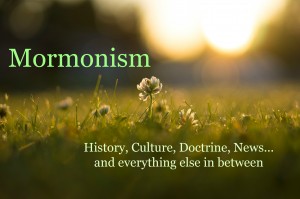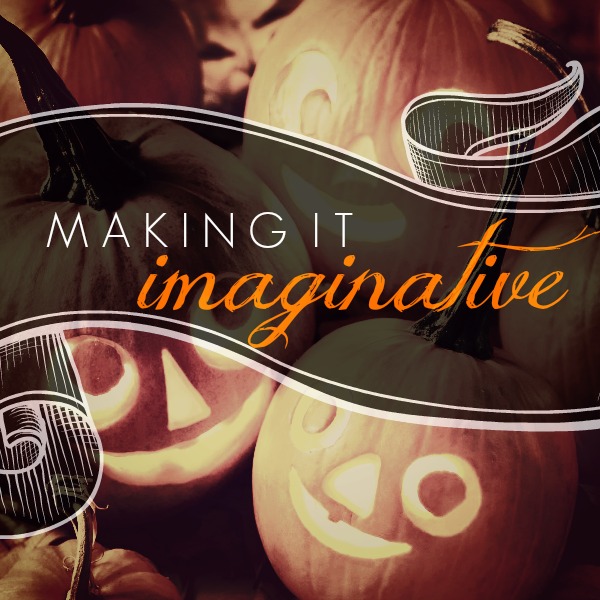While Mormons always celebrate Christmas and Easter, holidays clearly seen as Christian in nature, Halloween is celebrated by some Mormons and not celebrated by others. Most Mormon congregations have mild Halloween parties called Trunk or Treat, in which the children, dressed in costume, go from car to car in the parking lot. Church members give them candy from the trunks of their cars. This allows the children to collect treats in a safe and moral environment. Many congregations combine this with a chili-making contest.
 Halloween’s history begins with Samhain, an ancient Celtic celebration of the end of the harvest. The end of the harvest season also marked the beginning of winter, and the people who celebrated Samhain believed it was a bridge to where the dead lived. They believed the first day of November allowed the dead to return as ghosts. The decorations we often see as traditional Halloween decorations were left on door steps to keep the ghosts away or to nurture them while keeping them outside. Ghost costumes were meant to fool the ghosts into believing the person forced to leave his home that day was also a ghost.
Halloween’s history begins with Samhain, an ancient Celtic celebration of the end of the harvest. The end of the harvest season also marked the beginning of winter, and the people who celebrated Samhain believed it was a bridge to where the dead lived. They believed the first day of November allowed the dead to return as ghosts. The decorations we often see as traditional Halloween decorations were left on door steps to keep the ghosts away or to nurture them while keeping them outside. Ghost costumes were meant to fool the ghosts into believing the person forced to leave his home that day was also a ghost.
It became a Christian holiday in the eighth century. In earlier times, Christians often placed a Christian holiday on a non-Christian holiday to help converts transition. This is also how Christmas came to be held on December 25, which was originally used to celebrate a Pagan holiday known as Saturnalia . The Catholics who wanted to make November 1 celebrations appropriate for Catholics named the new holiday Hallows Day, a day to celebrate the Catholic Saints, and the day before came in time to be known as Halloween. In early days, the poor would go from home to home begging for food that day and would repay the gift by praying for the ancestors of those who fed them.
Today, Halloween is, for most people, a holiday not associated with religion or with its original origins. It is, instead, a celebration of the imagination God gave to children. They dress up as anyone they admire or simply want to pretend to be. People open their hearts to give treats to all children who knock on their doors, even if they are complete strangers, a reminder of the Christian rule to show loving kindness even to strangers.
 Mormons neither worship nor fear their ancestors, but they do teach their children to honor them. Mormons do extensive genealogy and most have many years of research completed. They often participate in volunteer projects that help to put historic documents online to preserve them for the future and to make it easier for people of all faiths (or no faith) to work on their genealogy. FamilySearch.org is a free genealogical research website run by the Mormons that is open to the public at no cost. It provides millions of indexed historical records and also allows people to create a family tree that will be connected to the trees others place. In this way, researchers can work together to create an accurate history of their families. Halloween can never, even when thought of in terms of its origins, be frightening to Mormons. In fact, a Mormon encountering a deceased ancestor would drag the ancestor to the genealogy files so their records could be updated. Although Mormons don’t believe in ghosts floating around in that way, many a Mormon has secretly wished one would show up while they were battling their genealogical brick walls.
Mormons neither worship nor fear their ancestors, but they do teach their children to honor them. Mormons do extensive genealogy and most have many years of research completed. They often participate in volunteer projects that help to put historic documents online to preserve them for the future and to make it easier for people of all faiths (or no faith) to work on their genealogy. FamilySearch.org is a free genealogical research website run by the Mormons that is open to the public at no cost. It provides millions of indexed historical records and also allows people to create a family tree that will be connected to the trees others place. In this way, researchers can work together to create an accurate history of their families. Halloween can never, even when thought of in terms of its origins, be frightening to Mormons. In fact, a Mormon encountering a deceased ancestor would drag the ancestor to the genealogy files so their records could be updated. Although Mormons don’t believe in ghosts floating around in that way, many a Mormon has secretly wished one would show up while they were battling their genealogical brick walls.
While the decision as to whether or not Halloween should be celebrated is a personal one for each Mormon, I personally believe that every day of my life is what I make of it. If I choose to use an event in an appropriate way and to surround myself with others using it the same way, then it is an appropriate event. I have seen people turn good into bad and bad into good through their individual choices. If something has a bad connotation, then it can be a wonderful thing to help change it to something good that others can imitate, as did the early Catholics who helped a group of people leave behind inappropriate traditions and replace them with positive ones. I chose to make it a day to honor my children’s imaginations and minds and for us, it was a special and uplifting day.
About Terrie Lynn Bittner
The late Terrie Lynn Bittner—beloved wife, mother, grandmother, and friend—was the author of two homeschooling books and numerous articles, including several that appeared in Latter-day Saint magazines. She became a member of the Church at the age of 17 and began sharing her faith online in 1992.





I’m a total wimp and I don’t like sugar, which really makes halloween a toughie…but I LOVE to see my children create and dress up and play and use their imaginations. I love the interactions between all ages on Halloween (the non-scary interactions at least!)
I personally believe celebrating Halloween is appalling to God. It shows God that you can entertain the thought of celebrating other gods.
Interesting point, Bill; that’s something I’ve never thought about! I believe that’s why the Church has no official stance about Halloween: it’s up to us to decide whether this holiday is appropriate to celebrate or not. Along with this article, Ask Gramps discussed the topic of Halloween some years ago, but the thoughts and principles it mentions are still applicable today!
False idle worship. Is this are not what God despises?
Hi Michael! Your concern is a common one among members of The Church of Jesus Christ of Latter-day Saints, and for good reason. We want to make sure that when it comes to Halloween, we are celebrating the holiday in a way that does not coincide with evil or darkness, instead using it to grow closer as a family and make happy memories together. In 1996, the Ensign answered a question about Halloween and said the following: “We have found that it is not necessary to avoid Halloween festivities altogether. With a little planning, Halloween can be a fun family time. But as we gauge our behavior by the light of scriptures and modern revelation, we can set a proper example for our children and others as we heed the Lord’s admonition to “chase darkness from among [us]” (D&C 50:25).” Halloween should not be a time to engage in “false idol worship,” but rather to enjoy dressing up (appropriately) and spending positive quality time with friends and family.